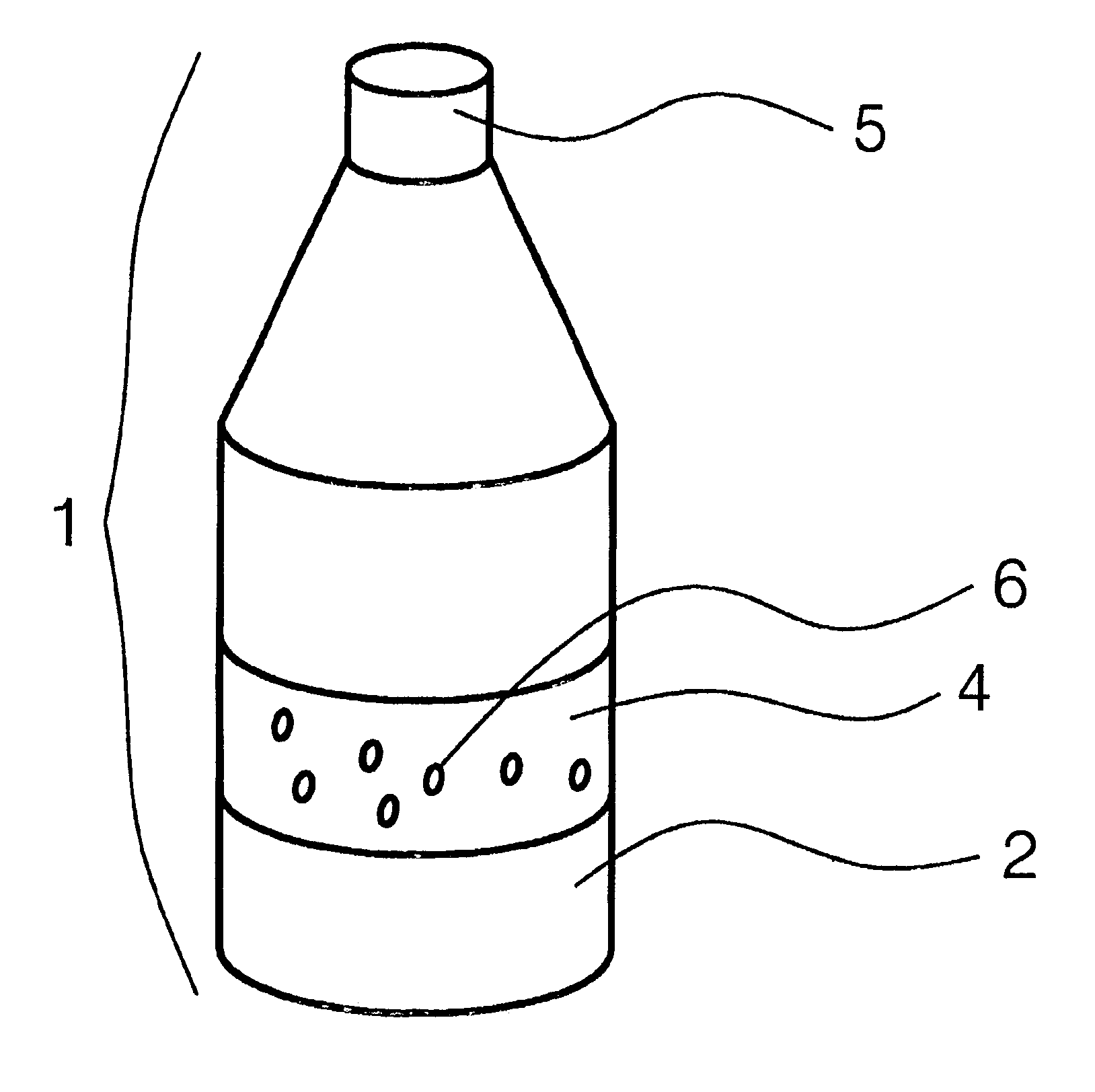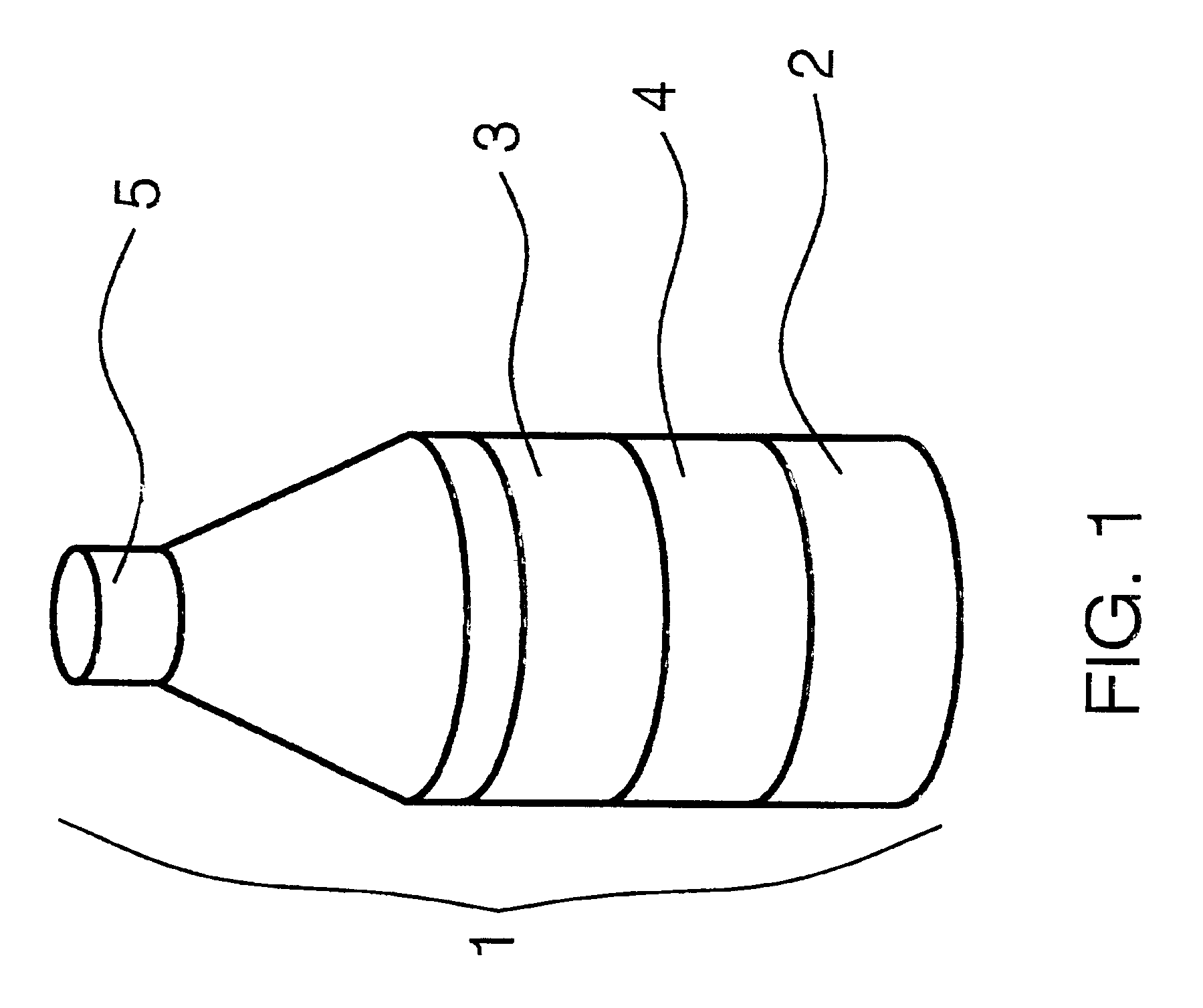However, as is well known, freezing requires substantially constant
refrigeration from the time of packaging until the time of consumption.
Further, some products do not lend themselves well to freezing without some change in the properties of the product.
Further yet, required thawing of a product may be inconvenient or undesirable.
Recognized limitations of this process reside in that it is not suitable for use with products which do not tolerate these high temperatures well.
Thus, in some cases,
retort canning may not be desirable for certain food products, particularly in cases in which the product is a batter, or the like, which is intended to be cooked immediately prior to consumption, for example.
In other cases, it may not be desirable to cook the product at all.
However, certain food products possess chemical properties which may be inconsistent with the conditions under which biostatic and fungistatic agents are effective.
However, in many cases a low
pH level cannot be reasonably maintained in a food product due to inter-reaction of the ingredients of the product with acid.
Uneven or a lack of full mixing may affect taste, texture, and
mouthfeel of the dough, for example.
Nonuniform dough mixing may also result in a variance in dough can pressure and, in turn, decreased shelf stability, and reduced performance of the eventual food product.
Another problem faced in the production or formulation of dough is that the viscoelastic properties of dough may change as the dough continues to develop and build
viscosity.
However, these same constituents are often the most difficult to mix homogeneously within the developing dough.
Problems which may occur when the dough ingredients are not thoroughly mixed include less than adequate proofing and low specific volumes in final
baked goods, for example.
Commercial doughs are typically packaged in cans for example, so a lack of uniform mixing can result in some cans having too much leavening, and therefore an excessively high can pressure, and other cans having too little leavening, and therefore an excessively low can pressure.
If the can pressure is too high the can might burst, leading to unusable product.
If the can pressure is too low, the dough might not be shelf stable, and might spoil because there was insufficient pressure to expel all of the
oxygen from the can.
A non-uniform distribution of ingredients may also result in non-uniform final products or a final product with a lower
specific volume.
This can result in an increased production time, decreased output capacity and, therefore, decreased
manufacturing efficiency.
Longer mixing times may also cause the dough to attain a
viscosity beyond its peak
viscosity, adversely affecting the dough's viscoelastic properties.
However, Hans does not disclose a method to enhance the uniformity of the ingredients within the dough.
Such
capsule sizes may tend to leave brown spots on dough and a poor appearance.
Further, many food approved
coating materials used in
sodium bicarbonate microspheres may tend to develop micro fissures, cracks or to dissolve when stored in the acidified batter over time, causing premature reaction and negating the
antimicrobial or fungicidal function of the acid in the batter.
Kent is directed to a method for adding compatible ingredients, but does not offer a totally self-contained shelf stable batter product.
None of these known methods insure that the dough product will have an adequately mixed and shelf stable leavening
system though.
Immersing the encapsulated
sodium bicarbonate made from such shell materials may result in low
shelf life, as the liquid batter is acidic, kept at a pH of 5.0 to 5.5 for example.
The acidic environment of the batter, used to keep microbial growth to a minimum during storage and to affect the chemical leavening reaction during baking, may also cause deterioration of the
capsule shell materials used to form encapsulated bicarbonates.
This leads to a short
shelf life as premature reaction forms
carbon dioxide gas and swells the container in which the liquid batter is stored.
The premature reaction also minimizes the leavening effect upon baking and can reduce the effectiveness of the batter to act as an
antimicrobial composition as the
acidulant loses its
potency.
As a result, products produced by the methods described above may not be uniform, due to uneven leavening action, suffer a short
shelf life, and / or result in a baked good or dough product with poor appearance, uneven shape and / or a poor taste profile.
 Login to View More
Login to View More  Login to View More
Login to View More 


